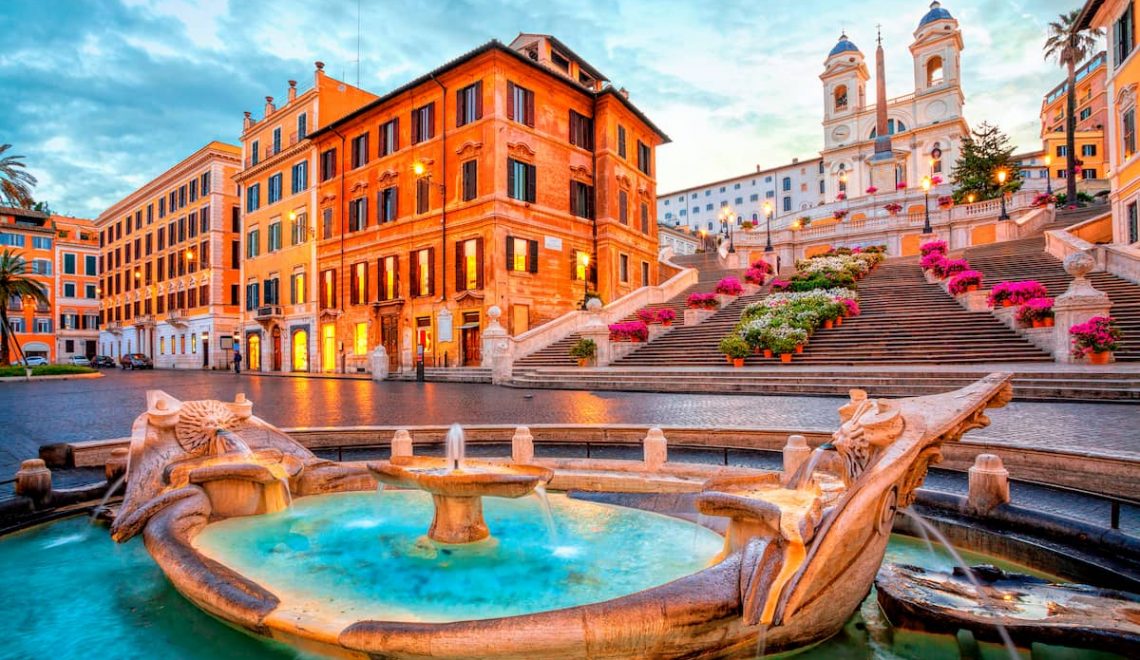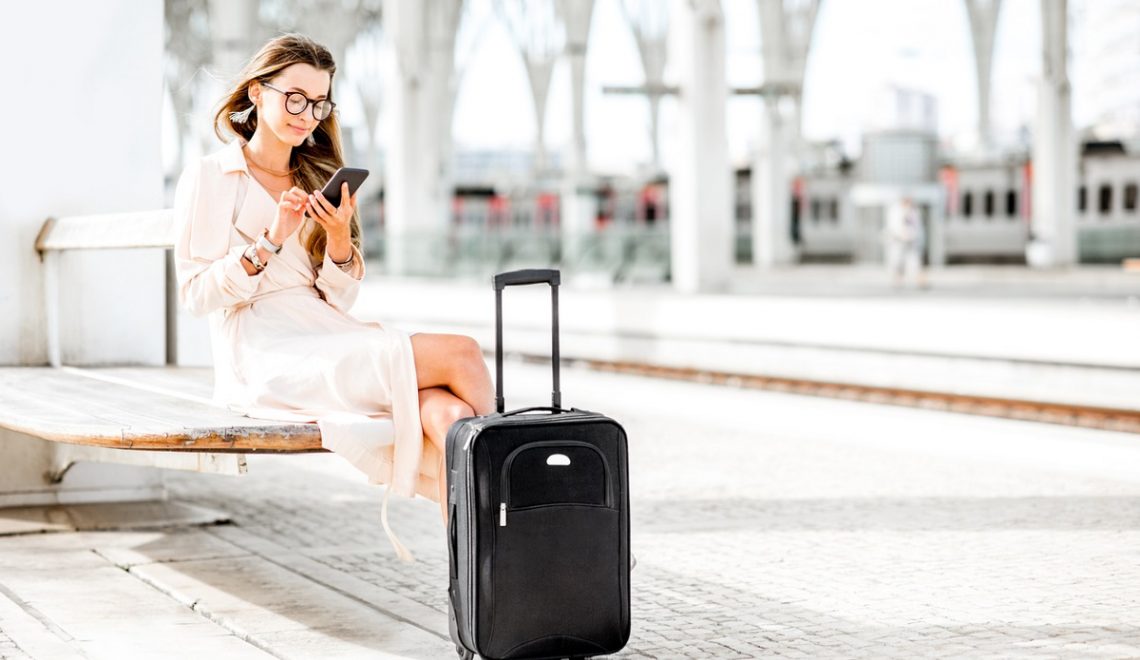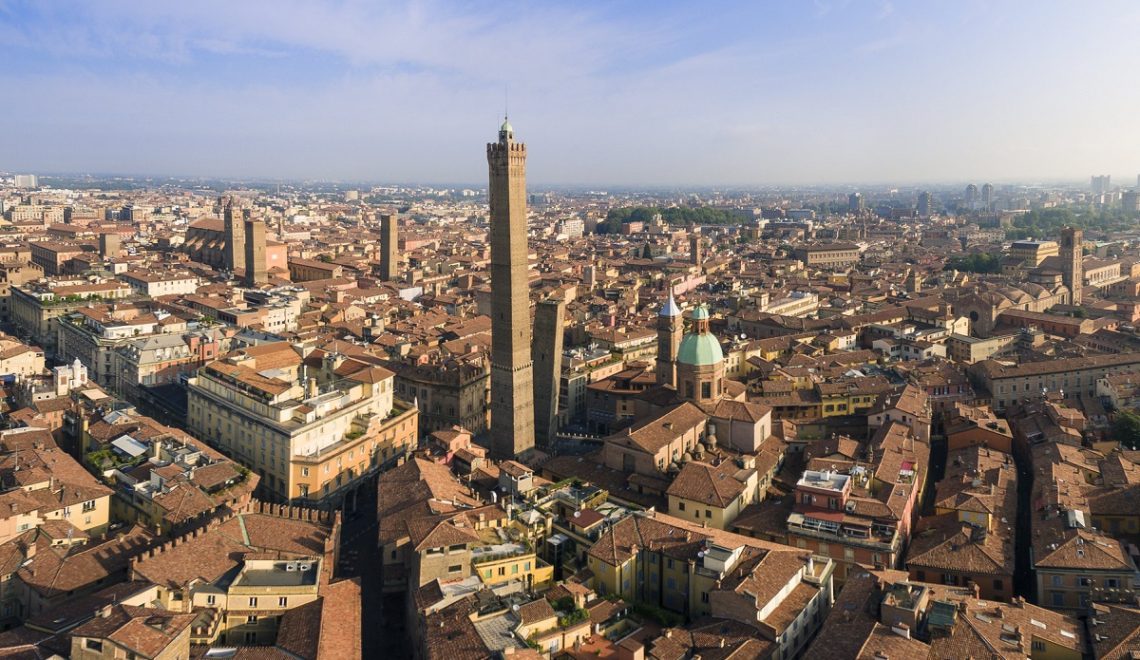
Italo Treno takes you on a discovery of Bologna, one of the pearls of Emilia Romagna, among porticoes, medieval towers, churches, squares and traditional goodness.
Are you ready for a weekend in Bologna with friends in the city’s best clubs and venues? With this mini-guide, Italo will reveal what you can see in a two-day trip to Emilia’s capital. To visit Bologna, there’s no need to drive – public transportation is great, or you can simply walk. The historic center of the city contains most of its treasures. Once in the center, you can start your visit on foot and discover seven of Bologna’s unmissable gems. You can take a leisurely stroll through the arcades and discover the city’s most romantic places. If you love history and culture, visit underground Bologna, from the canals to the Bagni di Mario. But now let’s see what you can see in 48 hours.
What to see in Bologna in two days: index
- Piazza Maggiore and the Fountain of Neptune
- Basilica of San Petronio
- The two towers: Asinelli and Garisenda
- Piazza Santo Stefano: the Seven Churches of Bologna
- The Bologna Quadrilateral: shopping and food
- Finestrella di via Piella
- The Archiginnasio Library
- House of Lucio Dalla
- Street Art in Bologna
- Sanctuary of San Luca
1ST DAY IN BOLOGNA
When you arrive in Emilia’s capital, before your tour of the historic center, visit Bologna’s underground high-speed train station designed by Isozaki-Maffeidi, an imposing underground structure which is a hub of Italy’s rail system. If instead you’re traveling with your children, here’s what to do in Bologna with kids and our travel tips. So now it’s time to start your visit and discover the Bolognese treasures and wonders of the city on this first day! Ready?

Start walking from Central Station, which is very close to the city center, and take Via Indipendenza; linger to browse the many stores and admire the beautiful surrounding buildings. After this stroll down Via Indipendenza, you come to Piazza del Nettuno – Neptune Square – centered on the imposing fountain with the statue of the god of the sea, which the locals call The Giant. The sculptor Giambologna created this work in 1565 as a symbol of papal power: as Neptune rules the waters, so the Pope rules the world. At the statue’s feet are four cherubs, representing the Ganges, Nile, Amazon, and the Danube, the rivers of the then-known continents.
Adjacent to Piazza Nettuno, Piazza Maggiore, the main hub of the city, awaits you. This square, 116 meters long and 60 meters wide, was built in the late Middle Ages but only took on its present form in the 15th century . It is surrounded by thirteenth-century buildings of enviable beauty: on one side by Palazzo d’Accursio and Palazzo Comunale di Bologna, and on another side by Palazzo Re Enzo and Palazzo della Podestà. In the past, the townspeople would gather there to listen to public proclamations; in modern times, it has changed its face and become a favorite venue for the fruit and vegetable market. Today it is a meeting point for Bologna’s nightlife thanks to its many restaurants and clubs. If you are already thinking about lunch, here’s where to eat in Bologna at reasonable prices.

In Piazza Maggiore, you will find one of the most important churches in all of Europe and the fourth in Italy: the Basilica of San Petronio. It is built in the Gothic style and is dedicated to the city’s patron saint. Its facade was left incomplete first due to lack of funding and later as an aesthetic choice. It is a civic church, meaning it was built by the citizens of Bologna between the 14th and 15th centuries. Visit also the Basilica’s interior to see the world’s longest sundial in an enclosed location and the Italy’s oldest church organ. Remember that admission is free.
Lunch break looms, and if you’ve worked up an appetite and love Emilian cuisine, you should know that Bologna is a foody’s city par excellence, and the street food is top-notch. Here is a guide to Bologna’s street food and where to enjoy good food.

From Piazza Maggiore, proceed on foot down Via Rizzoli, arrive at Piazza di Porta Ravegnana and admire Bologna’s two most famous medieval towers:
Asinelli and Garisenda. I recommend climbing the Torre degli Asinelli because it is the highest leaning tower in Italy (97.20 meters). It was built between 1109 and 1119 by the Asinelli family. To visit it and climb to the top, buy the ticket for €3 and climb 498 steps. The stunning all-round cityscape is a unique spectacle. Did you know that in Bologna there are 22 other towers that are blended into the fabric of the city? In the past there were as many as 100!
After this strenuous visit, you will be even hungrier. For a quick snack with generous portions, authentic dishes, and traditional hospitality, I suggest a break at the best osterias in Bologna. Try these establishments , seriously good Bologna eateries!

Continue your tour of Bologna and from Piazza di Porta Ravegnana, it’s about a five-minute walk to Piazza Santo Stefano. You will find yourself in front of one of the most important architectural monuments of Emilia Romagna and Italy: the complex of the Seven Churches. It is a basilica that comprises six others from different periods: Church of the Crucifix, Basilica of the Sepulcher, Church of St. Vitale and St. Agricola, Pilate’s Courtyard, Church of the Martyrium, Medieval Cloister, and St. Stephen’s Museum. A truly unique place. It can be visited from 9 am to noon and from 3.30 pm to 6.30 pm and admission is free.
After the visit, nearby you will find the best places for delicious brunches in Bologna! You won’t regret it!

The first day of this 48-hour tour of Bologna comes to an end: take a moment to relax shopping and sampling Emilian delicacies or visit Bologna’s Quadrilateral. From Piazza Santo Stefano, a five-minute walk takes you to the Quadrilateral, the city’s ancient market place. The district forms a square consisting of: via Rizzoli, via dell ‘Archiginnasio, via Farini and via Castiglione; in the Middle Ages, it housed most of the city’s crafts guilds. Today, it is one of Bologna’s most characteristic sites and one of the best locations if you love good food. Here you will find numerous bars, restaurants, and shops of all kinds, from luxury to mid-range establishments, with stalls that sell all food categories, from fruit and vegetables to fish. Immerse yourself in the aromas of Bologna’s specialties and enjoy the best tortellini in the city! Your first day will take on a whole new flavor! In addition to the Quadrilateral, pay a visit to the Fico di Bologna, the world’s largest agri-food park with many products all strictly made in Italy and the specialties of authentic Emilian cuisine.
2ND DAY IN BOLOGNA
Start this second day in Bologna by visiting some other of the city’s distinctive landmarks. Options include a number of mysterious attractions, points of cultural interest, or a trip out of town just a few kilometers from Emilia’s capital. If you can spare a few more days, visit Emilia-Romagna and its excellent cities full of art and great food.

Begin this second leg of the tour with one of Bologna’s best-kept secrets: the Finestrella in Via Piella, on the Reno Canal. From Porta Govese, you arrive at the famous Finestrella on the Moline Canal and the bridge that crosses the canal. This corner of the city is known as Little Venice. Overlooking Guglielmo Oberdan Street and from the small square window on Piella Street, enjoy the flow of one of the few stretches of intact water courses that have not been paved over. The Moline Canal is concealed between houses and, in the past, has long been hidden from view. This waterway is a continuation of the Reno Canal, and you should know that between the 12th and 14th centuries Bologna was crossed by a system of canals that connected it to the Po’ river and supplied it with water. If you’re a social media enthusiast, be sure to post your visit on your channels! If you would like to discover other enchanting places in this region, be sure to have a look at our guide to the most romantic villages and hamlets in Emilia-Romagna.

Continue your tour and walk down from Via Piella, Via dell’Indipendenza and in less than ten minutes, you are on Via Archiginnasio, where you find the Archiginnasio, the location of Bologna’s ancient University. Admire the more than 7,000 heraldic coats of arms of students and professors scattered among the building’s courtyard and corridors. In the interior, visit the striking Anatomical Theater, designed in 1637 for university lectures on anatomy, and the frescoed Stabat Mater hall. It can be visited from Monday to Friday from 10.00 am to 6.00 pm; on Saturdays from 10.00 am to 2.00 mn; on Sundays and holidays from 10.00 am to 2.00 pm. The cost of the ticket is 3 €.
If you’re returning to Bologna for a business trip, here are some suggestions for Coworking in Bologna and your office space in the city. The city offers several convenient and practical places to study, work on the go or run your business!

From Via dell’Archiginnasio, a five-minute walk takes you to Via d’Azeglio, a district of Bologna with fine stores, boutiques, and bars. Here you find the home of Lucio Dalla, Bologna’s much-beloved songwriter and musician. Visit his home and experience the spaces where the world-renowned artist lived and worked. Discover the most interesting anecdotes of his life and trivia: his connection with the city, friendships, distinguished guests, and how his songs were written and performed. Enter the world of Lucio Dalla, singer, actor, and director, who was also passionate about painting, sculpture, film, theater, photography, and poetry. The House can only be visited by guided tour hosted on the website bolognawelcone.com; the ticket cost is €15 for adults and €10 for children aged 6 to 12 and over-65s.

After your visit to Lucio Dalla’s house, stroll through the downtown streets and don’t miss the multitude of murals and graffiti that enliven the city. Bolognese street art is executed with various techniques and on various surfaces. You can admire it in the city’s porticoes and alleyways. The most interesting works in the city center are by Gutiérrez at 38 Zamboni Street, Levalet at Piazza Azzarita, and Lokiss and Rae Marini at Largo Caduti del Lavoro.
If you love this modern art form, don’t miss our guides to Street Art in Italy: Street art in Turin among the murals of Millo and more, Street art in Milan: the murals and graffiti not to be missed, Street Art in Naples: all the interesting facts about the Neapolitan murals, and Street art in Rome: Ostiense, Tor Marancia and more.

As you come to the end of these two intense days, devote the rest of your trip in Bologna to an out-of-town trip to the hills of Bologna: the Sanctuary of Madonna di San Luca. It is a Basilica dedicated to Catholic Marian Worship on Guardia Hill at an elevation of 280 meters. In this important shrine, the Icon of the Virgin and Child known as the St. Luke Madonna has been venerated ever since the rain miracle of 5 July 1433. Tradition holds that people should reach it on foot. Walk down Via d’Azeglio to Via Urbana and then continue to Via Saragozza. Follow it to the monumental Porta Zaragoza and to the Arch of Meloncello, where you will find the Portico di San Luca. From Piazza Maggiore, you will have already traveled 3 km, and from here starts the ascent to the Sanctuary, which continues for another 2 km.
It’s worth noting that there are 53 kilometers of porticos in Bologna, and the one in San Luca, at 3,796 meters, is also the longest in the world. It has been included by UNESCO among the Bologna porticoes recognized as a World Heritage Site.
The total length of the walking tour, from the center of Bologna to the Sanctuary, is about 6 km. If you prefer to use public transportation instead, go to Porta Saragozza or Villa Spada and take bus no. 58.
There is also the San Luca Express train, which connects Piazza Maggiore with the Shrine. The service operates daily and tickets are purchased on board. The ticket price for adults is €10 round trip and €5 for children aged six to ten and accompanied disabled persons.

When you arrive at the Shrine of Our Lady of San Luca, you have an unparalleled panoramic view of the entire city of Bologna and its hills from above. Admission is free and opening hours are weekdays from 6.30 am to 5.00 pm from November to February and until 7.00 pm from March to October, and the Icon of the Madonna remains covered from 12.30 pm to 2.30 pm. On holidays, opening hours are from 7.00 am to 5.00 pm from November to February and until 7.00 pm from March to October; the Icon remains covered from 1.00 pm to 2.00 pm.
How to get to Bologna and move around the city
Italo offers you direct connections to Bologna Centrale, one of Italy’s largest train stations: there are more than 50 connections a day from Ferrara, Brescia, Florence, Milan, Naples, Padua, Reggio Emilia, Rome, Salerno, Turin, Venice, and Verona. What are you waiting for? For example, the train journey from Rome to Bologna, takes only 2 hours and 15 minutes! Check all train schedules and prices to Bologna and travel in comfort with high-speed rail.

Getting around Bologna is very easy, you can move on foot or thanks to the excellent bus system: the city’s historic downtown is always closed to traffic. The public transport service includes 70 lines, of which five are night and there are various ticket formulas.
The ticket lasts 75 minutes from validation and costs €1.30 if you buy it from vending machines or authorized retailers. If you buy the ticket on board, the price is €1.50. A day-ticket costs €5 and is valid for 24 hours; it can only be purchased in the points of sale. The other option is the city pass ticket; it costs €12 and covers 10 trips of up to 75 minutes each.





